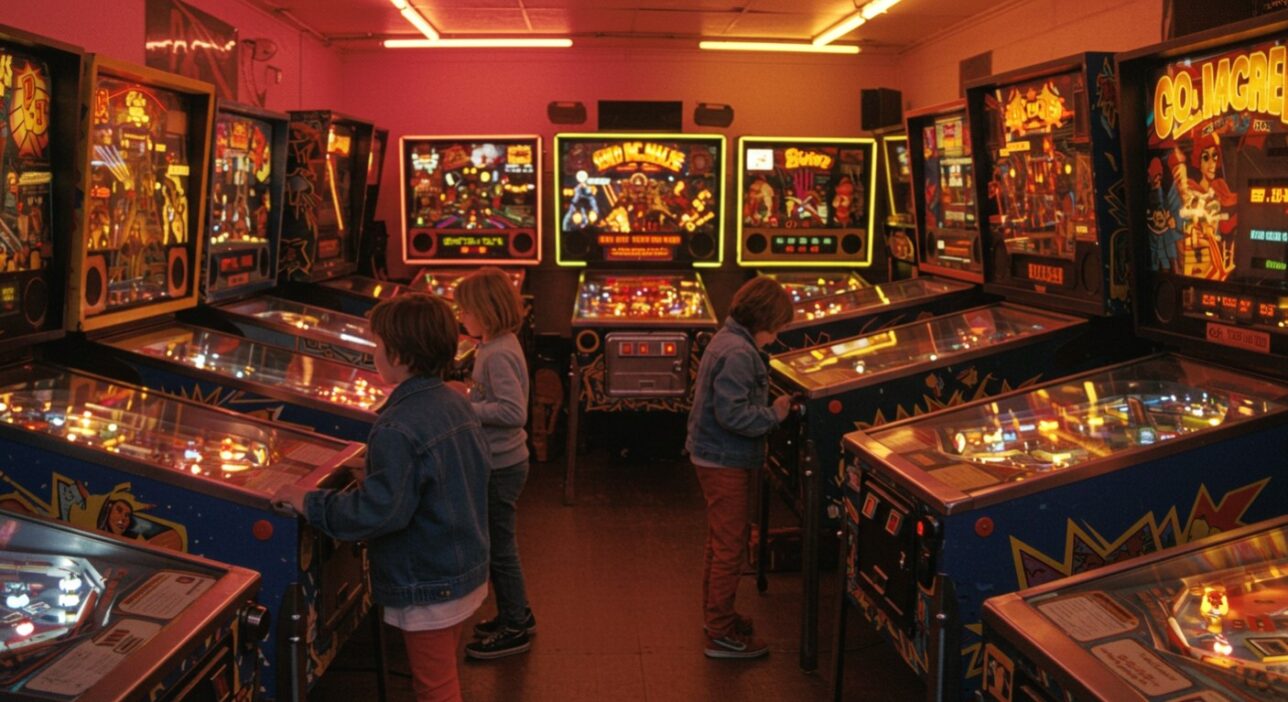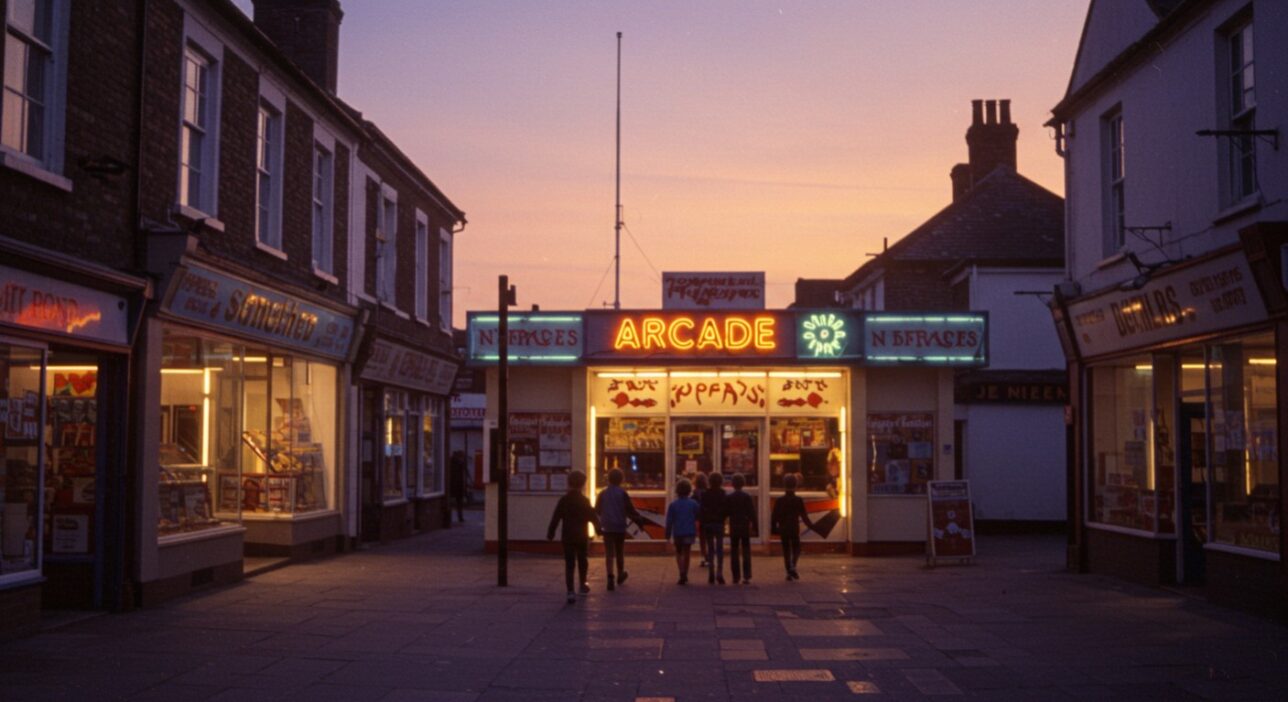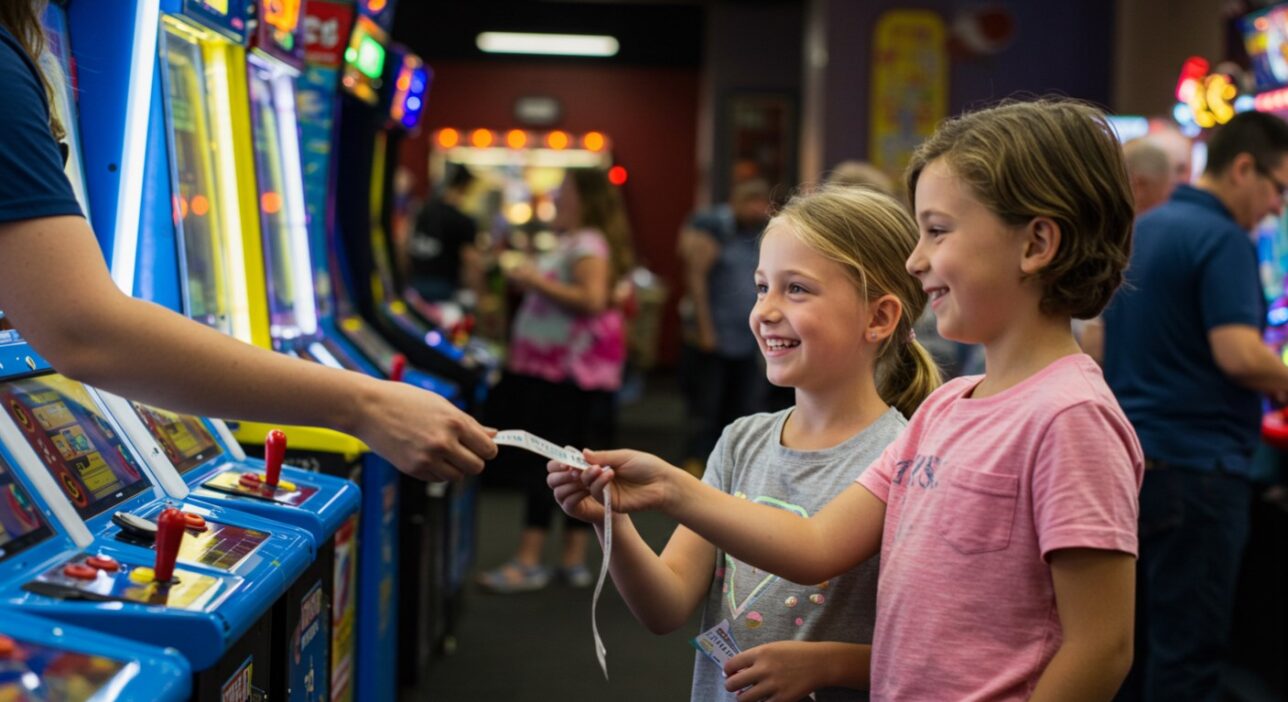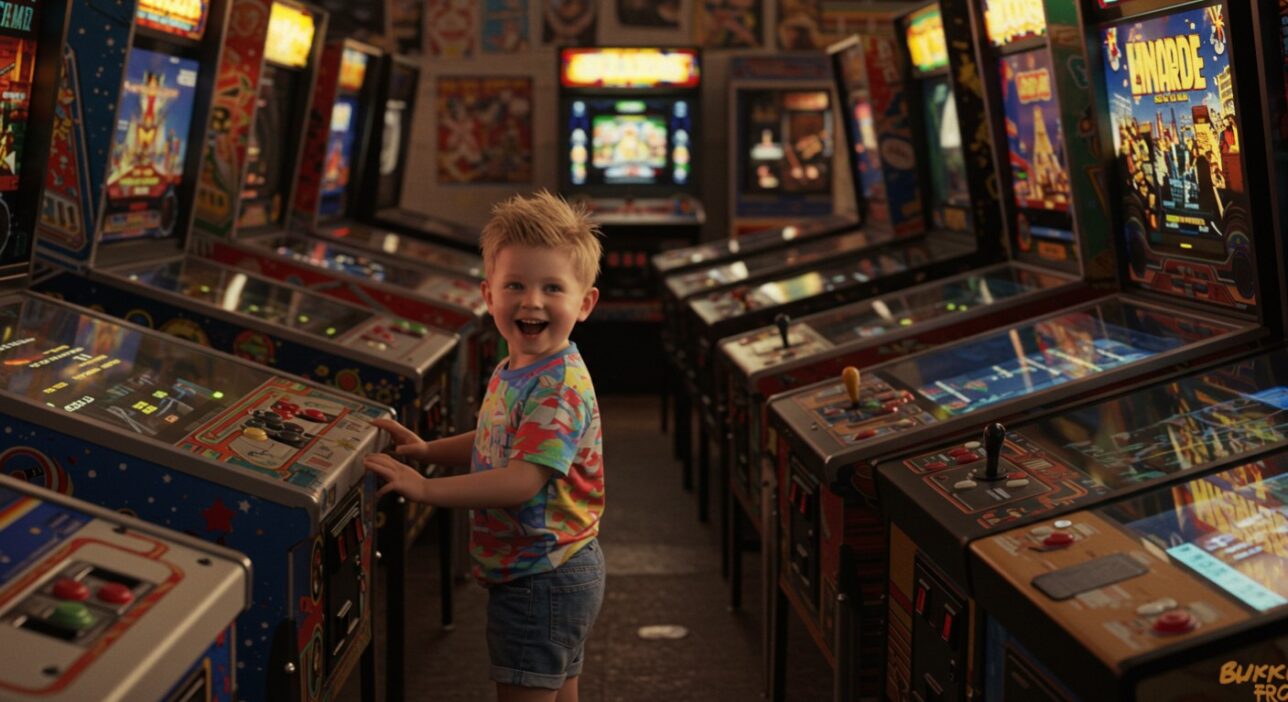
Do Kids Still Go to Arcades?
For decades, the arcade was a rite of passage for British children. Whether it was a rainy day at the seaside, a birthday outing, or a Saturday treat, children would clutch their pocket money, run into neon-lit halls, and spend hours on coin-pushers, pinball tables, and the latest arcade cabinets. For many parents today, arcades formed a defining part of childhood leisure.
But the landscape of play has changed. Home consoles like the PlayStation and Xbox dominate living rooms. Tablets and smartphones have given children instant access to games that cost little or nothing to play. Online platforms allow kids to meet, chat, and compete without leaving the house. Against this backdrop, the obvious question arises: do kids still go to arcades?
The answer is yes — but not in the same way as before. Children may not flock to arcades weekly as they once did, but they still encounter them as part of holidays, birthday parties, and family outings. Arcades survive not as the centrepiece of youth culture, but as enduring traditions and reinvented spaces. To understand how kids interact with arcades today, we need to look at where they came from, how gaming habits shifted, and why arcades continue to hold appeal.
The Golden Era: When Every Child Went to the Arcade

The 1980s and 1990s were the peak years for children in arcades across the UK. Almost every seaside town had amusement halls filled with the latest cabinets. Blackpool, Brighton, Southend, Skegness, Scarborough, and Great Yarmouth were all defined by their seafronts lined with flashing machines and the constant hum of coins and music.
For children, a trip to the arcade was synonymous with holidays. Pocket money would be saved up to spend on 10p slot machines, coin-pushers, or a round of air hockey. Parents might join in, but often it was kids who darted from machine to machine, chasing high scores and ticket jackpots.
These arcades were not only about games but about atmosphere. The smell of fish and chips, the buzz of the pier, the flashing lights, and the clatter of coins all became part of the sensory memory of childhood. For many, the arcade was a social space — somewhere to meet friends, compete, and celebrate small victories together.
In this golden era, arcades were more than entertainment: they were central to how children experienced leisure and social play.
The Rise of Home and Mobile Gaming
By the early 2000s, things began to shift. Technology transformed the way children played.
Consoles such as the PlayStation 2, Xbox, and later the Nintendo Wii offered complex games with stories, characters, and graphics that matched or surpassed arcade machines. Suddenly, children didn’t need to go out to play the latest titles — they had them at home.
PC gaming brought another dimension, with online connectivity introducing children to global competition. By the 2010s, smartphones and tablets gave kids instant access to endless free games. Angry Birds, Minecraft, Roblox, and Fortnite became part of daily routines.
For many children, gaming became more private and individualised. Instead of gathering in physical spaces, they played together online. Arcades, which relied on location, coins, and constant upkeep, found it harder to compete. Many smaller town arcades closed. The era of arcades as mainstream children’s hangouts came to an end.
Seaside Arcades: Still Popular with Families

Yet one thing has never changed: the enduring link between the British seaside and the arcade. Even as home gaming took over, arcades at holiday destinations continued to thrive.
Brighton Pier, Blackpool Pleasure Beach, and Southend seafront still draw families, and arcades remain a central part of the experience. Children today might not be chasing high scores on Pac-Man, but they flock to coin-pushers, claw machines, and ticket redemption games with the same excitement their parents once felt.
Seaside arcades are fuelled by tradition as much as novelty. Parents who grew up with them often feel compelled to introduce their children to the same rituals. Dropping coins into machines, winning small prizes, and playing a quick round of air hockey become family bonding moments. For many children, the seaside arcade remains their primary introduction to this world.
These spaces may have shifted focus from cutting-edge gaming to family-friendly fun, but they remain lively, busy, and central to the holiday experience.
Family Entertainment Centres
Another place where children still encounter arcades is in family entertainment centres. These modern venues combine multiple attractions: bowling alleys, cinemas, soft play areas, laser tag, and restaurants — with arcades as part of the mix.
Companies like Hollywood Bowl and Tenpin have invested in arcade areas that are colourful, bright, and full of ticket redemption machines. For families, this makes the arcade an easy addition to a day out. Parents can bowl with older children, take toddlers to soft play, and still let everyone enjoy a spin on the claw machines or basketball hoops.
Birthday parties are particularly popular in these centres. Children might celebrate with a bowling game and pizza before being let loose in the arcade to win tickets and prizes. The arcade is no longer the sole destination, but part of a larger, convenient package of entertainment designed for family appeal.
The Role of Prizes and Rewards

For children, one of the most compelling aspects of arcades is the chance to win something tangible. Ticket redemption machines remain staples of kids’ arcades, from coin-pushers to spinning wheels of fortune.
Unlike home gaming, where the reward is digital or internal, arcades offer physical proof of achievement. Tickets spilling from a machine or points stored on a swipe card can be traded for toys, sweets, or novelty items. Even small prizes feel significant because they were earned through play.
This system keeps children engaged, encouraging them to save or spend strategically. Some will instantly trade in for sweets, while others save up over multiple visits for something larger. Parents often see this as a useful way to introduce concepts of saving, spending, and decision-making.
For kids, the thrill of watching a machine dispense tickets remains as exciting today as it did in the 1980s.
Retro and Social Revival
Interestingly, arcades have also re-emerged in a form aimed at adults: barcades and retro gaming venues. These establishments, popular in cities like London, Manchester, and Leeds, cater to millennials and Gen Xers who want to relive childhood experiences while enjoying a drink.
While these are primarily adult spaces, many operate family-friendly hours where children are welcome. This provides another entry point for kids to experience classic games like Space Invaders, Donkey Kong, or Street Fighter II. Parents can share the games they played in their youth, giving children a glimpse into gaming history.
The retro revival proves that arcades still hold cultural weight. They are no longer cutting-edge, but they are iconic. For kids, they become part of a larger family story, passed down through generations.
Why Kids Still Go: The Arcade Experience vs Digital Gaming

So why do kids still go to arcades when they have endless games on phones and consoles? The answer lies in the unique experience arcades provide.
-
Lights and Sounds: Arcades create an atmosphere that home gaming cannot replicate. The flashing lights, upbeat music, and buzz of other players create an immersive environment.
-
Physical Play: Unlike digital gaming, many arcade experiences are hands-on. Throwing basketballs, slamming air hockey pucks, or steering racing simulators engages children physically.
-
Shared Fun: Arcades are social. Children can play alongside siblings, parents, or friends. Unlike online gaming, the laughter, competition, and cheering happen face to face.
-
Short Bursts: Arcade games are designed for quick play. This suits children’s attention spans, offering bursts of fun without long commitments.
For kids, arcades are not replacements for digital gaming but complements. They offer experiences that feel special precisely because they are different.
Challenges for Arcades Attracting Kids
Of course, arcades face challenges in appealing to the next generation.
-
Cost: Arcade games can be expensive compared to free mobile apps. Parents may limit how much children can play, reducing time spent in arcades.
-
Seasonality: Seaside arcades rely heavily on summer tourism. In off-season months, footfall drops, making it hard to sustain.
-
Teenage Preferences: While younger children enjoy arcades, teenagers often prefer the social networks and online platforms where their friends already are. Convincing them that the arcade is relevant can be difficult.
These challenges mean arcades are unlikely to return to their golden era levels of popularity. But they continue to survive by targeting families, children, and nostalgia-seekers.
The Future of Kids in Arcades

Looking ahead, arcades in the UK are likely to continue evolving.
-
VR and Interactive Tech: Virtual reality games and immersive experiences will attract children who crave novelty.
-
Esports Influence: Competitive gaming may see arcades host small tournaments or group play sessions.
-
Seaside Tradition: Arcades on piers and promenades will remain central to family holidays, even if the machines change.
-
Family-Centric Growth: Arcades within entertainment centres will remain popular as part of all-in-one venues.
Children may not go to arcades as often as their parents once did, but the tradition will endure, reshaped for new generations.
Do Kids Still Go to Arcades?: Yes, but Differently

So, do kids still go to arcades? The answer is a resounding yes — though not in the same way as in the 1980s and 90s. Arcades are no longer weekly hangouts or cutting-edge technology hubs. Instead, they have become part of holidays, birthday parties, and family outings.
Children still delight in coin-pushers, ticket games, claw machines, and simulators. Parents pass down their own memories, creating family traditions. Modern entertainment centres keep arcades alive as part of broader packages, while seaside towns preserve the classic arcade experience.
Arcades may be less central to childhood culture than they once were, but they remain a beloved and enduring experience. For today’s kids, the arcade is not gone — it has simply changed shape. And as long as families continue to seek shared fun, laughter, and nostalgia, kids will keep walking through the flashing doors of arcades.


